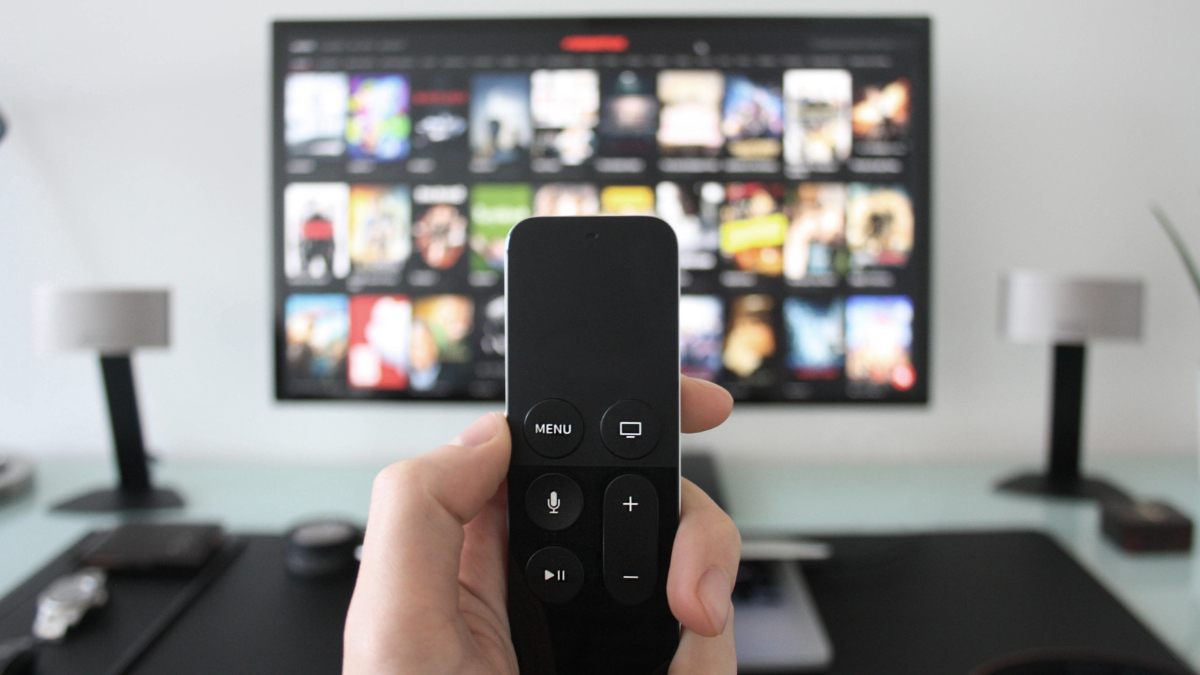Streaming
The Evolution of Streaming Quality: 4K and Beyond
Discover how streaming quality evolved from SD to 4K and HDR, see platform differences, and use practical tips to enjoy top visuals and sound. Upgrade your home setup with expert streaming advice.
Advertisement
Movie nights at home look nothing like those from a decade ago. As screens grow sharper, our expectations keep rising. Streaming quality now shapes how audiences connect with new releases and classics alike, whether you’re a casual viewer or a serious home theater fan.
A higher standard for streaming quality matters for more than just flashy visuals; it dictates what kinds of devices we buy and how we experience entertainment overall. Technology shifts have changed not only what we watch, but exactly how we watch it, even influencing production decisions in Hollywood.
This article explores where streaming quality stands today and which developments are set to redefine it further. By exploring 4K, HDR, and next-generation improvements, you’ll discover actionable ways to upgrade your viewing experience—no technical jargon or empty promises.
Pinpointing Key Milestones Transforms Your Streaming Quality Setup
The evolution of streaming quality didn’t follow a straight path. Each milestone, from grainy SD streams to dazzling 4K with HDR, came with technical hurdles for platforms and users alike. Recognizing these shifts helps you make smarter upgrade decisions at home.
One concrete example: upgrading from 720p to 1080p is like putting on new glasses—the difference is instantly visible, especially on larger displays. Each leap, such as 4K, enabled closer seating and bigger screens without seeing annoying pixels.
Visual Progression: From Standard Definition to 4K Streaming Quality
Early streaming platforms battled slow connections, forcing everyone to accept blocky SD images. By the early 2010s, faster broadband let users access HD streams with crisper visuals and smoother color gradients. Seeking better streaming quality drove rapid adoption of new devices.
Viewers quickly noticed a richer, “film-like” result. 1080p became the baseline for home entertainment systems. Those with keen eyes or large TVs began asking when 4K streaming quality would take over—showing just how user demand drives industry change.
Today, streaming giants regularly promote 4K and HDR content. It’s not just about more pixels: sharper images, deeper contrast, and wider color ranges are visibly apparent to most users, and content producers now target these standards by default.
Audio Advancements: Connect Sound to Visual Upgrades
While visuals got the spotlight, streaming quality also improved on the audio front. Early streams struggled to compress stereo tracks without artifacts—resulting in flat, muffled sound. New codecs and faster internet let users enjoy surround sound without lag.
The difference between basic stereo and Dolby Atmos, for example, is dramatic. Now you can distinctly hear rain behind you or footsteps crossing the room, mimicking an actual cinema setting. These upgrades align directly with rising expectations for streaming quality every year.
If you’re moving to a 4K setup, matching it with audio improvements completes the experience. Many streaming providers display which advanced audio options are available, letting you select a content source that suits your equipment and preferences.
| Quality Level | Resolution | Typical Bandwidth | Actionable Takeaway |
|---|---|---|---|
| SD | 480p | 1–3 Mbps | Use for older devices or data caps only |
| HD | 720p–1080p | 5–8 Mbps | Ideal for tablets and standard TVs |
| 4K UHD | 2160p | 15–25 Mbps | Choose with large screens and fast internet |
| HDR | Varies (HD–4K) | 10–30 Mbps | Activate when the display supports HDR modes |
| Dolby Atmos | Audio only | 1.5–3 Mbps | Enable for spatial audio, use compatible setup |
Setting Up for Peak 4K Streaming Quality at Home Gets Results
Matching your equipment with the platform’s technical offerings makes the most of streaming quality improvements. Even top-tier subscriptions won’t deliver 4K images or high-fidelity audio on outdated gear or slow connections.
For example, someone using a 1080p TV with basic stereo speakers will not benefit from next-gen streaming quality features, even from robust services. Upgrading devices streamlines your setup and maximizes your subscription value.
Building a Simple Upgrade Plan for Better Quality
Start with your display. Is your TV labeled “4K UHD” and “HDR10-capable”? Check the manual. Pair this with a streaming device or app that supports 4K content, then verify high-speed Internet (20 Mbps minimum) throughout your viewing space.
If upgrading audio, confirm HDMI ARC or eARC support so soundbars receive uncompressed signals. Next, check app settings—some default to HD until you select 4K or “high quality.” Finally, run a speed test: occasional slowdowns will cause sudden drops in streaming quality.
- Check hardware labels for 4K and HDR compatibility to ensure video enhancements unlock properly.
- Use Ethernet where possible, not just Wi-Fi, for consistent bandwidth and avoid 4K buffering issues.
- Update streaming apps to the latest version; new features sometimes rely on app or firmware refreshes.
- Adjust TV picture mode to match content type. For movies, use “Cinema” or “Filmmaker Mode” for accurate streaming quality.
- Test settings on content known for vivid visuals or immersive audio, ensuring your system’s streaming quality upgrades make a clear difference.
Completing these checks transforms your setup and uncovers weaknesses limiting your streaming quality before investing further. Even small adjustments—like the right HDMI cable—can prevent streaming drops or blurry images.
Choosing the Best Stream for Your Internet Plan
Match streaming quality choices with what your home Internet supports. Streaming a 4K film on a 10 Mbps plan leads to persistent loading icons, so limit ultra-high definition streams without an upgraded connection.
Families sharing bandwidth benefit from adaptive streaming: the app reduces quality if another person starts online gaming or video calls. You can usually set a maximum streaming quality in account options, preventing random mid-movie downgrades.
- Use your ISP’s speed test or a public tool to measure download speeds before movie nights.
- Install quality-of-service controls (QoS) on your router to prioritize streaming traffic for main devices.
- Block extra background devices or downloads while viewing high-bitrate content for steady streaming quality.
- Choose streaming apps with robust adaptive streaming algorithms—they’ll handle connection drops gracefully.
- If you share Wi-Fi, switch to 1080p for casual viewing and save 4K/HDR for solo or special occasions.
By adapting your method for streaming quality to real-world Internet speeds, you avoid frustration and ensure premium visuals shine only when your connection allows.
Evaluating Streaming Platforms by Their Quality Controls
Not all streaming services approach streaming quality development the same way. Platforms compete directly on how quickly and reliably they deliver top-tier images and sound—even if subscribers pay for the highest plan.
Comparing Provider Settings and Options Reveals Value
Some major platforms require you to manually enable 4K or HDR content, while others default to the best available. The difference becomes clear during busy evenings, when platforms known for rock-solid quality outperform rivals.
Consider the settings menu: look for “Sweet spot” modes balancing streaming quality and data usage. Providers may hide optimal settings several levels deep, so exploring the app before a big premiere weekend is smart.
Switching providers for specific exclusive shows means reviewing how each manages streaming quality. If one app constantly downgrades resolution, ask customer support or check community forums for device-specific tips—some viewers unlock better results with simple tweaks.
Assessing Original Content Production Standards
Content produced in “native 4K” looks crisper than content upscaled from lower resolutions. Look for badges or descriptions like “digitally mastered in 4K”—these indicate proper use of high-end gear and encoding for streaming quality.
Scripts such as “Is this shot in actual 4K, or just upscaled?” can help when speaking to support or researching shows. Readers who care about streaming quality will notice the nuances in fine detail and color accuracy.
Some platforms invest heavily in proprietary codecs, offering sharp visuals even in mixed lighting or fast-motion scenes. These advances matter for sports fans who want to see every bead of sweat or listeners craving perfectly-timed surround sound cues.
Watching for Signs Your Streaming Quality Isn’t Optimal
Recognizing issues with streaming quality empowers you to act immediately. Artifacts such as sudden blurriness, frozen frames, or mismatched audio result from misconfigured devices, low-speed connections, or poor source material on the platform.
Spot Color Banding and Compression Artifacts Fast
When watching a sunset scene, check for “bands” or sudden jumps between color shades—this means the stream’s compression is too aggressive. Smooth gradients, especially on premium content, signal robust streaming quality settings and a capable device.
If you see blocky artifacts during dark scenes or rapid movement, pause briefly and replay: strong connections usually fix minor hiccups. Consistent compression issues require adjusting app or device output settings upward to restore optimal streaming quality.
Notice moments where faces or backgrounds momentarily blur, resembling a poorly compressed photo. These interruptions indicate streaming quality drops—resolve them by switching servers, toggling auto/best settings, or confirming bandwidth allocation hasn’t changed.
Audio Out-of-Sync or Flatness: Fix Instantly
Streaming quality drops aren’t limited to visuals. Audio delays—where lips and voices don’t match—come from device lag or unstable Wi-Fi. Unplug and re-plug HDMI connections or restart the streaming device if the issue persists.
If movies sound “thin,” resembling an old cassette, revisit your app’s audio settings. Select “bitstream” or “Dolby Digital Plus” when supported, then allow devices to automatically detect the best streaming quality option for spatial sound.
Position yourself in the room’s sound “sweet spot”—usually at ear level with front speakers or soundbars. Minor adjustments to speaker angle and volume levels can maximize your streaming quality perception, especially when enjoying surround mixes.
Advancing Alongside Streaming Quality Innovations
As more households embrace streaming, technical progress will continue to reshape what we consider “excellent” streaming quality. Each leap—from SD to HD, then 4K, and now advanced HDR—requires effort from both viewers and providers to truly shine.
Staying current with equipment and learning the specific settings for each platform ensures you capture the full benefit of every streaming quality upgrade. Recognize artifacts, adjust configurations, and select Internet plans that support the highest resolutions your system allows.
Streaming quality already plays a leading role in our daily viewing habits. Investing in the right devices, connections, and platform tricks will help you enjoy even sharper, richer, and more dynamic entertainment for years to come.
You may also like

How Indie Films Found Their Place in Hollywood
See how indie films defied convention, pushing artistic boundaries and giving new creators a powerful cinematic voice.
Keep Reading


